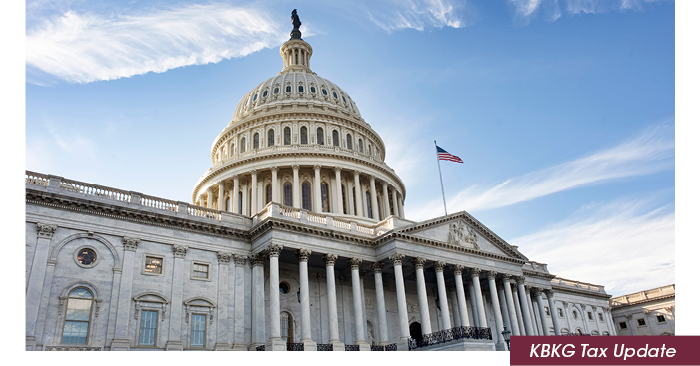On February 25, 2025, the House of Representatives voted on a budget resolution, passing 217-215. This framework aims to keep tax cuts from 2017 in place while making some budget changes for the next 10 years. The framework includes $4.5 trillion in tax breaks and $2 trillion in spending cuts. While this budget resolution will serve as a blueprint for drafting a detailed tax and spending bill, the long road to tax reform is still ahead.
KBKG has broken down what taxpayers need to know.
What’s in the Framework
- Keeps Tax Cuts from 2017: The tax cuts that were set to expire will continue, so people and businesses won’t see automatic tax increases.
- Cuts Government Spending: The bill reduces spending on programs like Medicaid, SNAP (food assistance), and Agricultural subsidies to offset the tax cuts.
- Money for Defense and Border Security: About $300 billion is set aside for military and border control.
- Raises the U.S. Debt Ceiling: The bill increases the amount of money the government can borrow by $4 trillion.
Who the Supporters and Skeptics Are
- Republicans: Most supported the framework, saying it helps the economy and keeps taxes low. One Republican voted no.
- Democrats: All oppose it, arguing that it mainly benefits businesses and cuts too much from social programs and families.
- Opposing Republicans: While one Republican voted against the resolution, there are more Republicans skeptical of what the ultimate details of a tax reform bill will be because they are concerned about government spending, increases in debt, or cuts to social programs in their districts.
The Senate’s Stance
Senate Republicans do not believe the House approach is the correct approach, so they passed their own scaled-back framework for $340 billion. The Senate framework focuses on sending President Trump money, which his administration has requested for its deportation and border security agenda, with plans to tackle the tax cuts separately later this year. With the passing of the House resolution, the Senate may work in tandem with the House.
Conclusion
The House passed this budget resolution. However, the more difficult part is to come, along with negotiating with the Senate, not to mention the reconciliation process, unless the Senate can get some Democrats on board. While the public continues to wait on possible tax policy changes, taxpayers are encouraged to capitalize on existing incentives.
KBKG offers a suite of software tools that help claim tax benefits, like Dash.tax, which streamlines claiming the R&D Tax Credit, and Residential Cost Segregator, which assists property owners with residential cost segregation studies. Taxpayers with questions on these incentives or other benefits should contact a KBKG expert today.


